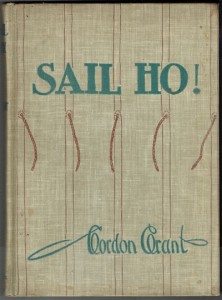A line, to which markers or ‘knots’ were attached at eight fathom (47ft 3inches to be precise) intervals, was wound on the reel which one man holds over his head.
To the end of this 500ft line was bent a canvas bucket or triangular chip-log drag, a wood panel weighted on one side so that it would float upright but remain stationary in the water. The second man holds in his hand a 28 second sand-glass. The officer in charge of the operation lowers the drag over the taffrail and as soon as it fills with water he sings out “Turn!”
The sand glass is turned and the line runs out.
When the half-minute is up the man with the glass calls “Stop” and the line is hauled in.
By counting the markers as they paid out over the rail the speed of the ship is measured by “so many knots.” The kn ot count was regularly taken, marked in the ship’s log, and this was added to the master’s dead reckoning of the speed of the vessel as he updated his position on the chart.
ot count was regularly taken, marked in the ship’s log, and this was added to the master’s dead reckoning of the speed of the vessel as he updated his position on the chart.
A great advantage of the system was that it could be used equally well at the night as during the day, since the knots could be counted in the dark.
From Sail Ho! by Gordon Grant, 1931


